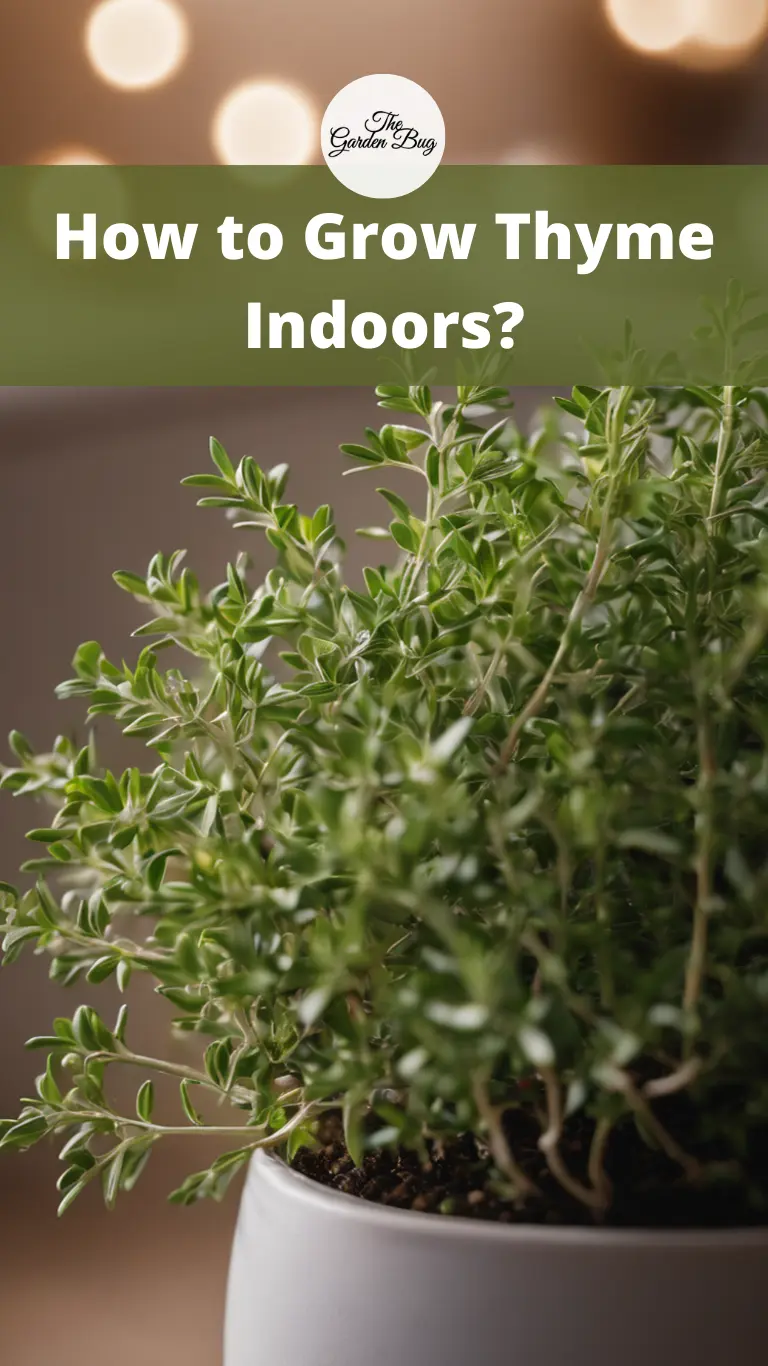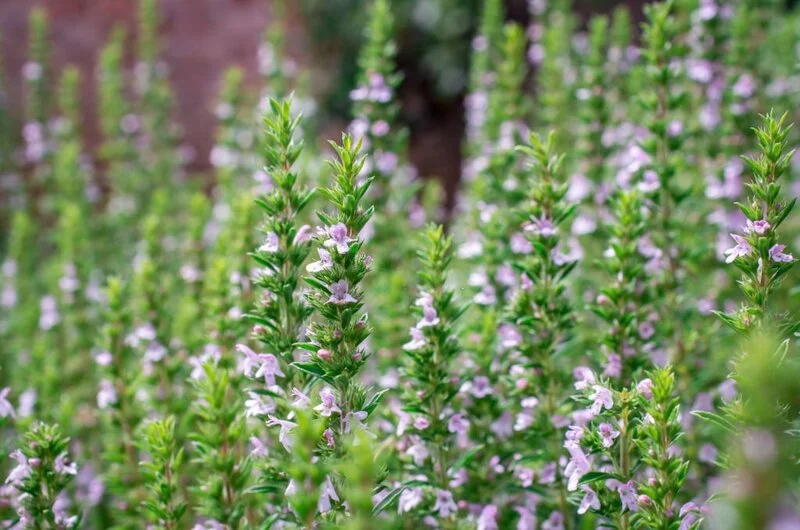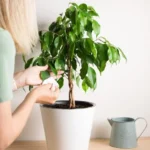Hello, dear readers! Today, we’re going on an indoor gardening adventure as we explore how to grow a fantastic herb right in your own home. The hero of our story is thyme, a fragrant and versatile herb that’s as lovely to grow as it is to use in our kitchens. Let’s dive into the amazing world of thyme and find out how we can cultivate it indoors!
- Tiny, strongly aromatic & flavorful evergreen leaves
- Garden use: herb garden, flower border, containers
- Culinary use: in bouquet garni, aromatic dishes
- Plant in full sun to partial shade for the best yields
- Plant during spring & fall
What is Thyme? A Brief Overview
Thyme is a pretty cool plant. It’s a member of the mint family and it comes from the Mediterranean. Picture a tiny plant with little green leaves and pretty flowers that can be pink, lilac, or white. But the real magic of thyme lies in its scent and taste. It’s got this amazing aroma – a bit earthy, a bit minty, and oh-so-fragrant! And the taste? It’s got a zesty, slightly sweet flavor that makes your food taste just perfect! Now, isn’t that something you’d love to grow in your home? We thought so! Let’s find out how.
The Benefits of Growing Thyme Indoors
Imagine having fresh thyme whenever you want, right at your fingertips! That’s one of the big wins when you grow thyme indoors. No more last-minute store runs when you run out of this essential herb. Plus, it’s not just about convenience. Indoor thyme plants purify your home’s air, adding freshness while also bringing a bit of nature indoors. And let’s not forget the beauty factor! Thyme is an adorable plant that adds charm and greenery to any room.
What You Need to Grow Thyme Indoors
Now, let’s get to the fun part – growing thyme indoors! Don’t worry, it’s not rocket science. You’ll need a few simple things:
- Thyme seeds or a small thyme plant. You can find these at your local garden store or online.
- A pot with drainage holes. Thyme dislikes wet feet, so make sure your pot drains well.
- Potting soil. Pick a well-draining soil; a mix designed for cacti is actually a good fit for thyme.
- A sunny spot. Thyme loves the sun, so place it near a sunny window where it can soak up those rays.
- Water, of course! But remember, thyme doesn’t like too much water. We’ll discuss watering in detail later.
See, it’s simple stuff, right? Now let’s learn how to plant and care for your thyme.
- HERB GROWING KIT: Package comes with 5 types of herb seeds, 5 jute bags, 5 plant markers, 5 soil disks, 1 mini shears, and 1 planting guide. This herb growing kit is super easy to start, and perfect for gardening beginners.
- INDOOR HERB GARDENING: We provide seeds that grow into Basil, Parsley, Rosemary, Thyme, and Mint. All these herbs seeded on your own would be safer and greener to eat, and especially suitable to be put on the kitchen’s windowsill so that you can get and cook with the freshly plucked.
- 5 JUTE BAGS: 5 durable jute bags with unique beautiful prints are supposed to hold soil and seeds. As the jute material is not waterproof, you’d better to use with a tray for water. Simple and stylish appearance is suitable for balcony, windowsill and shelf decoration, practical and beautiful, making your room full of vitality. Please transparent the seedlings to larger pots when they grow into 2-3 inch for more space.
- 5 SOIL DISKS: Our herb soil contains coconut coir, which is good to seeds germination and can promote the growth of seedling. It is compressed into soil discs (1.5″ in thickness, each soil disc weighs 2oz) for easy package and can expand into 10 times as large as what it was after absorbing the water. 5 soil discs are sufficient enough for the beginning of the plant growing.
- PERFECT GIFT: This herb growing starter kit comes with a beautiful box, which makes it a decent gift presenting to your families and friends for housewarming party, Father’s Day, Mother’s Day gifts and other important occasions. Herb growing can well free them from tired life, relieve their stress, and bring new vigor.
Step-by-Step Guide on How to Grow Thyme Indoors
Ready to get your hands dirty? Don’t worry, it’s going to be a fun journey, and here’s how to do it:
- Fill your pot with soil. Leave about an inch of space at the top.
- If you have a thyme plant, dig a small hole in the soil and put the plant in. If you’re using seeds, scatter them on top of the soil.
- Cover the seeds lightly with soil or press the plant gently into the soil, and then give it a good watering.
- Place your pot in a sunny spot. Remember, thyme loves sunlight!
- Now, it’s a waiting game. Seeds will sprout in about two weeks, while a plant will take a bit longer to get established.
Care and Maintenance for Indoor Thyme
With your thyme all planted, it’s all about the care now. Thyme isn’t a fussy plant, but it does need some love:
- Watering: Thyme doesn’t like to sit in water, so let the soil dry out between waterings. When the top inch of soil is dry, it’s time to water.
- Sunlight: Keep your thyme in a sunny spot. It needs about six hours of sun each day.
- Pruning: Prune your thyme regularly to encourage bushy growth. Simply snip off the top few inches of each stem, right above a leaf node.
With these simple care tips, you’ll have a healthy, lush thyme plant brightening up your home and spicing up your meals in no time!
- For more nutritious and tasty vegetables
- Optimum levels of primary plant nutrients
- Contains no GMOs, chicken manure or sewage sludge
- Feeds for several months
- Made with 100% organic and natural ingredients
Troubleshooting Common Problems
Now, growing thyme indoors isn’t without its challenges. Here are a few problems you might run into, along with their solutions:
- Yellow leaves: This could be due to overwatering. Remember, thyme prefers slightly dry soil.
- Wilting or drooping: It could be a sign of insufficient light. Make sure your thyme is getting plenty of sunshine!
- No growth: If your thyme isn’t growing, it might need some fertilizer. A slow-release organic fertilizer can do the trick.
Harvesting and Using Your Indoor Thyme
The time has come for the best part – harvesting your own homegrown thyme!
- When to harvest: The best time to pick your thyme is just before it flowers, when the leaves are packed with flavor.
- How to harvest: Use a pair of clean scissors or your fingers to snip off sprigs of thyme. Remember, regular trimming helps to keep your thyme plant bushy and healthy!
- Using your thyme: Fresh thyme is wonderful in a wide range of dishes. You can add it to soups, sauces, roasts, and much more.
Conclusion
See, growing thyme indoors isn’t as difficult as it seems, is it? With the right care and attention, you can have a thriving thyme plant right in your home. Not only will it liven up your space, but it’ll also add a burst of flavor to your cooking. So go ahead, give indoor thyme gardening a try – it’s thyme to shine!







